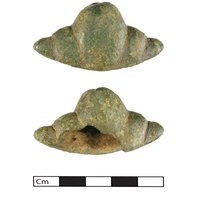
Viking Objects
Sword Pommel (NARC-E7AAF4)
An Anglo-Scandinavian copper-alloy sword pommel classed as a Petersen L type VI. The design is a fusion of Anglo-Scandinavian and Anglo-Saxon fashions. In many cases the design of the sword pommel is the only method of identifying the possible type and date of the sword it was attached to.
Read More
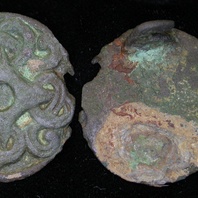
Viking Objects
Copper-Alloy Disc Brooch (LEIC-782CD2)
This Anglo-Scandinavian copper-alloy disc brooch has small traces of silvering on both surfaces. It is decorated in Borre-style interlaced knotwork matching the East Anglian type II. For more information on Scandinavian jewellery in England check out our blog: Brooches, Pendants and Pins: Scandinavian Dress Accessories in England.
Read More
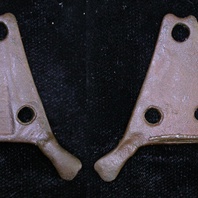
Viking Objects
Stirrup Mount (LEIC-AF8883)
This copper-alloy stirrup-strap mount is decorated with an unusual geometric pattern with incised lines running across its surface. It has been classified as a Williams Class A Type 8, but is probably a hybrid.
Read More
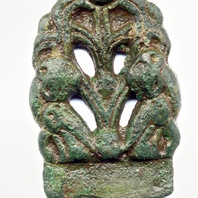
Viking Objects
Anglo-Scandinavian Strap-End (LEIC-0C2B81)
This example of an Anglo-Scandinavian copper-alloy strap-end displays foliate decoration and features a mixture of the Anglo-Saxon Winchester style and Anglo-Scandinavian zoomorphic heads. It is classified as Thomas Class E, Type 1.
Read More
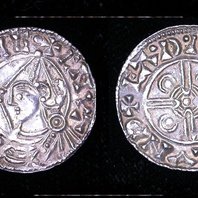
Viking Objects
Coin of Cnut the Great (LEIC-3E8CC4)
This silver Helmet IIIc Type penny was minted for King Cnut of England in London. The obverse inscription reads CNVTREXANG while the obverse reads EADPOLD ON LVND. Minting coins was a way of controlling the means of exchange within a kingdom and which created a more easily administered standardized system of trade. Moreover, the coins themselves were often used as propaganda, portaying symbols and statements that gave off a desired message. The Vikings later used the minting of coins to legitimize their own rule.
Read More
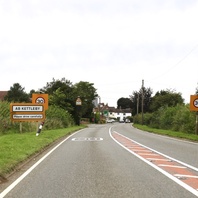
Viking Names
Ab Kettleby
Ab Kettleby, in the Framland Hundred of Leicestershire, comes from the Old Danish male personal name Ketil (Old Norse Ketill), originally a byname related to Old Norse ketill ‘a cauldron, a cauldron-shaped helmet’. This personal name was very common in England. It is compounded with Old Norse by ‘a farmstead, a village’. The affix Ab, which distinguishes the township from Eye Kettleby some four miles to the south, comes from the name of an early owner of the estate, a Middle English Abbe (either from the Old English male personal name Abba or the Old Norse male personal name Abbi).
Read More
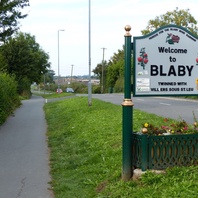
Viking Names
Blaby
Blaby, in the Guthlaxton Hundred of Leicestershire, likely comes from the unrecorded Old Norse male personal name Blár, which appears to be a byname from the Old Norse adjective blár ‘dark’, combined with the Old Norse element by ‘a farmstead, a village’.
Read More
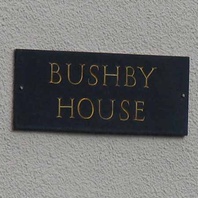
Viking Names
Bushby
The specific element of Bushby, in the Gartree Hundred of Leicestershire, is likely derived from the Old Norse male personal name Butr. Another Old Norse male personal name, Butsi, could also be formally accepted, and this personal name is found in the Danish place-names Busseby and Busserup. It has been suggested that the personal name became confused with Old English busc ‘bush’ or Old Norse buskr ‘shrub’, buski ‘shrubland’. This is a possibility because the neighbouring village Thurnby records a former area of thorn-scrub. The second element of the place-name is Old Norse by ‘a farmstead, a village’, thus Bushby could have the meaning ‘the farmstead of scrubland’ Bushby is now a joint parish with Thurnby.
Read More
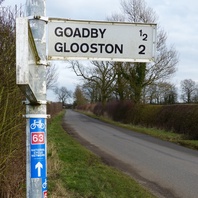
Viking Names
Goadby
The first element of Goadby, in the Gartree Hundred of Leicestershire, comes from the Old Norse male personal name Gauti (genitive singular Gauta), which is either a short form of names in Gaut- or is derived from an original byname meaning ‘a man from Gautland’. The second element of the place-name is Old Norse by ‘a farmstead, a village’. Occasionally the place-name is suffixed with reference to its neighbouring villages Noseley or Keythorpe to distinguish it from Goadby Marwood in the Framland Hundred.
Read More
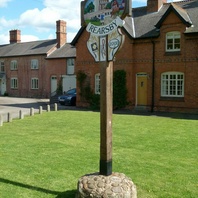
Viking Names
Rearsby
Rearsby, in the East Goscote Hundred of Leicestershire, comes from the Old Norse male personal name Hreiðarr and the Old Norse element by ‘farm, settlement’. The personal name here might be the same as that in Rotherby, Leicestershire.
Read More
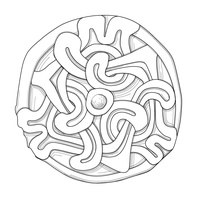
Viking Designs
Drawing of Copper Alloy Disc Brooch
Drawing of a copper alloy, gilded brooch with a zoomorphic design. Brooches were a typical part of female dress. Scandinavian brooches came in a variety of sizes and shapes which included disc, trefoil, lozenge, equal-armed, and oval shapes. The different brooch types served a variety of functions in Scandinavian female dress with oval brooches typically being used as shoulder clasps for apron-type dresses and the rest being used to secure an outer garment to an inner shift. Anglo-Saxon brooches do not match this diversity of form with large disc brooches being typical of ninth century dress styles with smaller ones becoming more popular in the later ninth and tenth centuries. However, since disc brooches were used by both Anglo-Saxon and Scandinavian women they are distinguished by their morphology. Scandinavian brooches were typically domed with a hollow back while Anglo-Saxon brooches were usually flat. Moreover, Anglo-Saxon brooches were worn singly without accompanying accessories.
